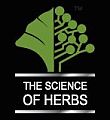

How to identify your skin type?
Skin is the largest and the most complex organ in our body. Therefore one should take utmost care of skin and to do that one needs to know the type of skin he/she has and type of care they should take to keep skin health in perfect condition. One should not only know the skin type he/she has but also the type of changes the skin undergoes in various seasons. Just because they have dry or oily skin, using various cleansers and chemical treatments can cause more harm than understanding the changes in skin texture in various seasons. While harsh cleansers can remove oiliness, they can signal to skin to produce more oily, thick chemical lotions and creams can inhibit natural oil production in the skin, resulting in even drier skin.
Therefore one should fully understand the type of skin they have and the prefect treatment for the same resulting in healthier and vibrant skin texture. Although the skin types can be broadly divided into dry, normal and oily, everyone’s skin is unique and should be evaluated individually. Here are two easy ways to determine your skin type at home:
